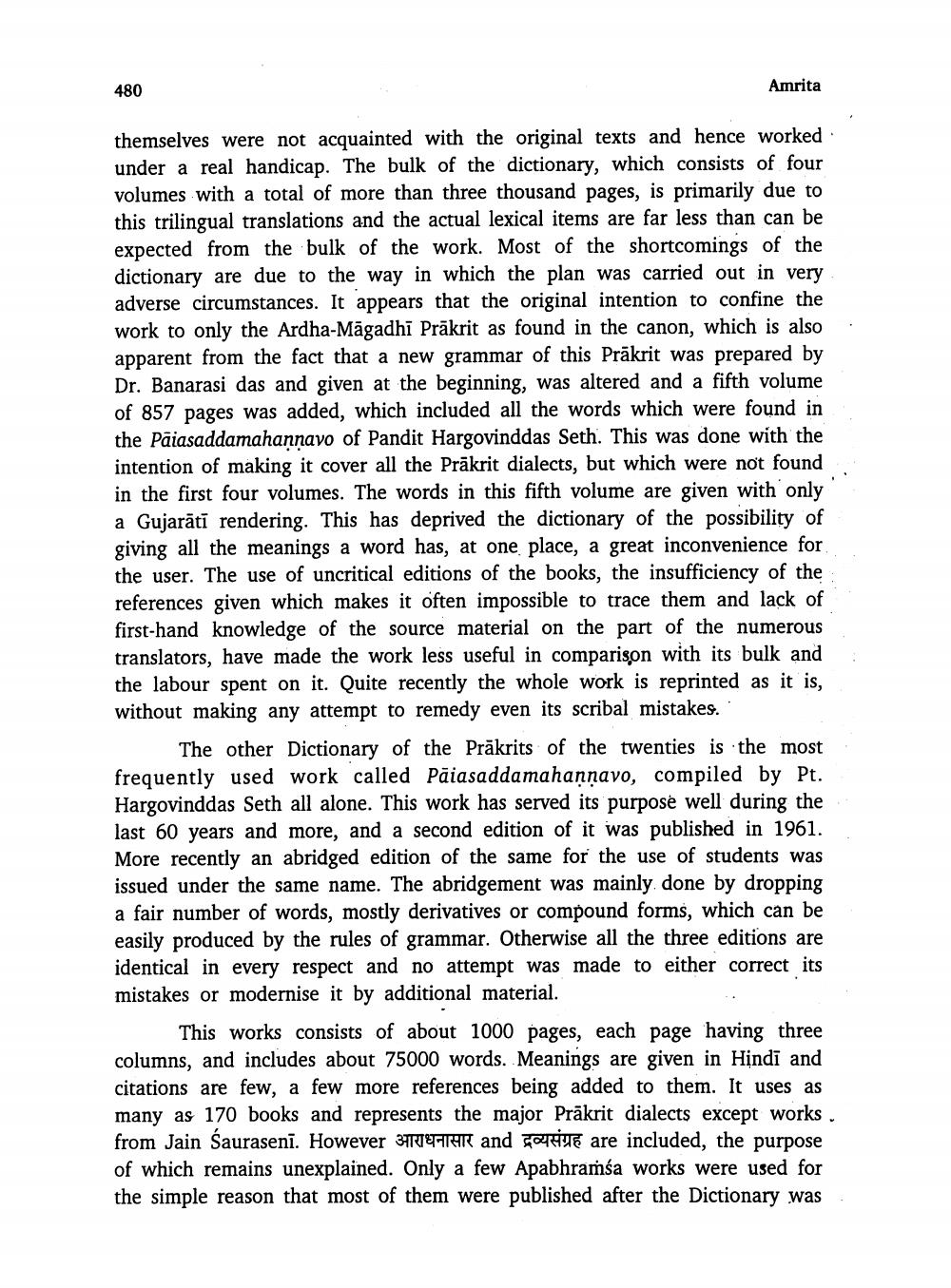________________
480
Amrita
themselves were not acquainted with the original texts and hence worked under a real handicap. The bulk of the dictionary, which consists of four volumes with a total of more than three thousand pages, is primarily due to this trilingual translations and the actual lexical items are far less than can be expected from the bulk of the work. Most of the shortcomings of the dictionary are due to the way in which the plan was carried out in very adverse circumstances. It appears that the original intention to confine the work to only the Ardha-Māgadhi Prākrit as found in the canon, which is also apparent from the fact that a new grammar of this Prākrit was prepared by Dr. Banarasi das and given at the beginning, was altered and a fifth volume of 857 pages was added, which included all the words which were found in the Paiasaddamahannavo of Pandit Hargovinddas Seth. This was done with the intention of making it cover all the Prākrit dialects, but which were not found in the first four volumes. The words in this fifth volume are given with only a Gujarāti rendering. This has deprived the dictionary of the possibility of giving all the meanings a word has, at one place, a great inconvenience for the user. The use of uncritical editions of the books, the insufficiency of the references given which makes it often impossible to trace them and lack of first-hand knowledge of the source material on the part of the numerous translators, have made the work less useful in comparison with its bulk and the labour spent on it. Quite recently the whole work is reprinted as it is, without making any attempt to remedy even its scribal mistakes.'
The other Dictionary of the Prākrits of the twenties is the most frequently used work called Päiasaddamahannavo, compiled by Pt. Hargovinddas Seth all alone. This work has served its purpose well during the last 60 years and more, and a second edition of it was published in 1961. More recently an abridged edition of the same for the use of students was issued under the same name. The abridgement was mainly done by dropping a fair number of words, mostly derivatives or compound forms, which can be easily produced by the rules of grammar. Otherwise all the three editions are identical in every respect and no attempt was made to either correct its mistakes or modernise it by additional material.
This works consists of about 1000 pages, each page having three columns, and includes about 75000 words. Meanings are given in Hindi and citations are few, a few more references being added to them. It uses as many as 170 books and represents the major Prākrit dialects except works from Jain Saurasenī. However 3RTERAR and carine are included, the purpose of which remains unexplained. Only a few Apabhramsa works were used for the simple reason that most of them were published after the Dictionary was




